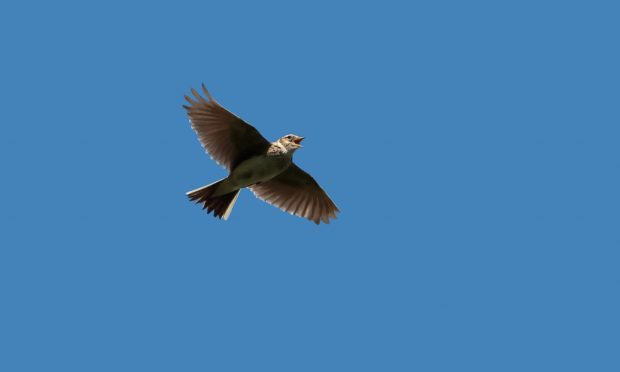As I write this, Scotland is “enjoying” its warmest day of the year so far – 15.4C in Edinburgh.
Granted, that’s some way off our all-time warmest March day of 23.6C, set in Aboyne on March 27 2012, but by anyone’s reckoning 15.4C is a warm enough day to assume that the cold is firmly behind us. Course, back in 2012, Aboyne was under six inches of snow by April 3, so I still live in hope of a similar flip in extremes. But even I will now admit that winter’s writing is on the wall.
To be fair, it’s been that way for a few weeks now, the signs being plain to hear. I say “hear” because, this time of year, sound is vitally important in how I perceive and experience the shift in seasons. And three sounds in particular hammer it home, each one representing another nail in winter’s coffin.
In recent years, the first has come as early as January 19 and as late as March 2, but February is more usual.
This year it started on February 23, a constant whistling and squeaking that seems to emanate from all directions at once. I know it’s next to futile to even try, but I still look up to locate its source in the deep blue – a skylark.
Quick as skylarks are to return to the hill, even these eager singers seem reluctant to seize the first available “nice” day lest they jinx it. They often wait till at least the second such day in a row, and their stunningly intricate song is inevitably regarded as one of the first indicators of spring.
But as a winter lover, I don’t stress too much when the larks are singing, as I know they’re way too eager for their own good and things can still go either way. Beautifully defiant, yes, but they’ll likely be retreating down the hill the following week.
The second sound always surprises me when I hear it because for some reason, year after year, I forget about it completely. Until, that is, I head out to work one sunny morning and hear that unmistakably crisp “Chissick! Chissick!”
A pied wagtail, confidently and comically strutting about with its head bobbing backwards and forwards, and its tail furiously wagging during any pause in movement.
I didn’t start recording its annual arrival date until 2020, but so far it has shown remarkable punctuality – March 2 both this year and last.
It’s unlike any other bird in the garden, in a strange charismatic category all its own. It doesn’t hop along like a robin or a finch, rather it motors like a clockwork toy, its wee legs propelling it across the ground in sudden and impressive fits of speed whenever it spots something tasty up ahead.
It’s a welcome springtime neighbour, but while it’s more wary than the skylark, even the wagtail’s return is often premature.
However, by the time the third sound echoes out, I know there is no way back, because this one seems to know better than most when it’s safe to come back up the hill.
Typically, I hear it the third week in March, but this year it was much earlier, on February 26. And while it always comes some weeks after the skylark, this year the cold retreated so abruptly that there wasn’t much between them. Just three days.
It’s the wild, whistling warble of a curlew, and those luminous, chill golden evenings in early spring just wouldn’t be the same without it. So ear-catchingly beautiful and familiar. Sad, but also joyous, it’s impossible to resist.
Weirdly, I find a kind of peace in that moment. When I hear skylarks sing I always think “Gawd, you’re brave!”, but when the curlew sings that’s my cue to give up and accept the inevitable. An acceptance where I reconcile myself with the change, and in that moment it’s like I’m given permission to move on, to enjoy the warmth and appreciate the upsurge of life.
Freed from my winter jacket, I’m now eagerly awaiting subsequent new arrivals, the bird world having the decency to stretch the migration out to prolong the happy experience.
I’m looking forward to my first wheatear, cuckoo and whitethroat. I’m listening for the unmistakable “pee-peep” of oystercatchers. And of course not forgetting the clicks and squeaks of that most punctual of returnees, the swallow. There’s genuinely so much to look forward to. And no, I’m not just talking about next winter!
Ben Dolphin is an outdoors enthusiast, countryside ranger and former president of Ramblers Scotland
